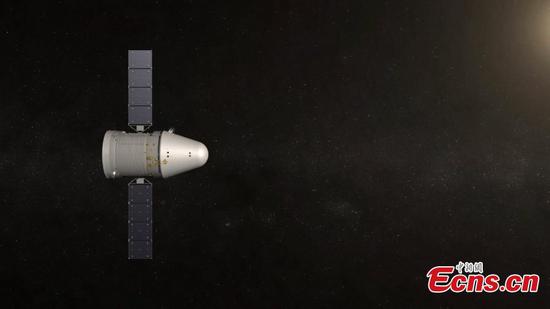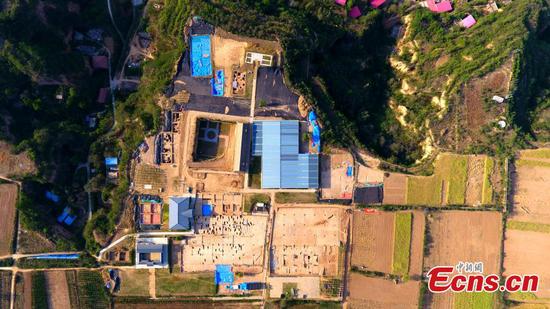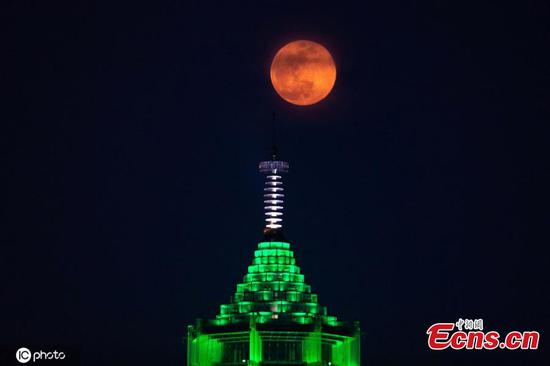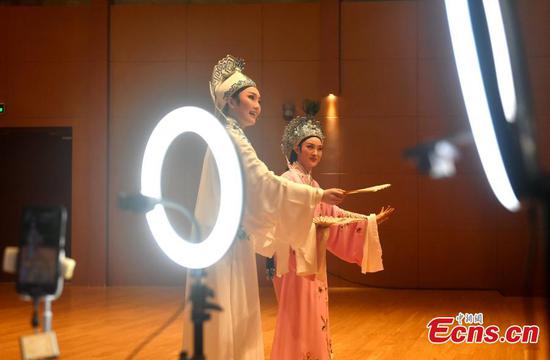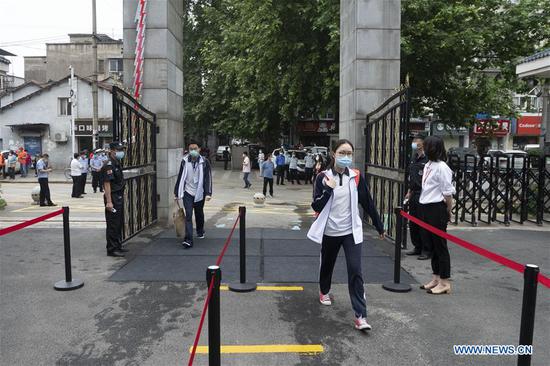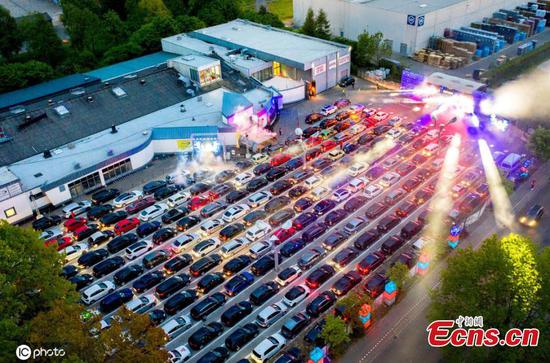
The re-entry module of the prototype of a new-generation Chinese spacecraft landed in its designated area in the Inner Mongolia autonomous region on Friday. (Photo by Wang Jianbo/for China Daily)
The re-entry module of the prototype of China's new-generation manned spacecraft successfully returned to the Earth on Friday afternoon, according to the Beijing Aerospace Control Center.
The center said in a statement that at the beginning of the re-entry process, the prototype activated its brake engines after receiving control signals from the center and started to move toward the Earth. The module was not occupied during the test.
Then the re-entry module separated from the prototype's service module at 1:33 pm and began to fall back into the atmosphere at an ultrafast speed of 9 kilometers per second.
As the module approached the ground, it released parachutes to decelerate before finally landing at 1:49 pm at the Dongfeng Landing Site in the Inner Mongolia autonomous region.
The descent was monitored by the Beijing center with the final part tracked by helicopters. The craft was recovered by personnel from the Jiuquan Satellite Launch Center.
The entire process was not easy because the prototype operated in a highly elliptical orbit with an apogee of 8,000 kilometers, a trajectory designed for the new-generation spacecraft to carry out the country's future manned lunar expeditions, according to the Beijing center.
This led to challenges in orbital planning and control as well as re-entry guidance, officials explained, saying that engineers had rehearsed repeatedly and produced a number of emergency-response plans.
The new spacecraft's prototype, consisting of re-entry and service modules, was lifted into low Earth orbit on the maiden mission of China's Long March 5B heavy-lift carrier rocket on Tuesday evening from the Wenchang Space Launch Center in Hainan province.
During its 68-hour journey, the prototype carried out several scientific experiments and technical tests and also verified key equipment for the new-generation spaceship such as heat-resistance, control and recovery devices, the China Manned Space Agency said.
Once put into formal service, the new manned spaceship will employ world-class designs and technologies and feature great reliability and flexibility, multiple functions and reusability.
The re-entry module will house astronauts and control the craft during spaceflight. The service module will contain power and propulsion systems.
The new spaceship will have a length of 8.8 meters, a diameter of 4.5 meters and a liftoff weight of 21.6 metric tons. It will be tasked with serving the construction and operation of China's soon-to-be-constructed space station as well as the country's manned lunar missions being planned by scientists, the agency explained.
Designers at the China Academy of Space Technology in Beijing said that compared with the Shenzhou series, the country's operational crewed spacecraft family, the new model will be capable of conducting longer missions, housing more astronauts and cargo and operating in tougher environments.
China will soon start putting together its first manned space station. A total of 11 Long March 5B, Long March 7 and Long March 2F missions will put the station's major components into orbit and transport astronauts there to assemble the station, which is expected to become fully operational around 2022 and operate for about 15 years.
The multimodule station, named Tiangong or Heavenly Palace, will be mainly composed of three components-a core module attached to two space labs-having a combined weight of more than 90 tons.
In the long run, the nation also aspires to build and operate a crewed scientific moon outpost, according to space authorities.
In addition to manned endeavors, China will also bring two ambitious space programs into being before the end of 2020, using the fourth flight of the Long March 5 to send a rover toward Mars and utilizing the rocket's fifth launch to put the Chang'e 5 robotic probe on the moon.










